Why you can trust Tom's Hardware
Intel's Core i9-9900K is a hit with some professionals due to its high clock rates, so we ran an extra series of tests to measure the Core i9-10900K's performance in workstation-class workloads. Some of these applications also make an appearance in our standard test suite, but those test configurations and benchmarks are focused on a typical desktop-class environment. In contrast, these tests are configured to stress the systems with workstation-class workloads.
We loaded down our test platforms with 64GB of DDR4 memory spread across four modules to accommodate the expanded memory capacity required for several of these workstation-focused tasks. We also outfitted the test systems with PCIe 4.0 SSDs to factor in the platform-level advantage of AMD's support for the faster interface.
Puget Systems Benchmarks
Puget Systems is a boutique vendor that caters to professional users with custom-designed systems targeted at specific workloads. The company has developed a series of acclaimed benchmarks for Adobe software, which you can find here.
Adobe After Effects CC Render Node Benchmark

The After Effects render node benchmark leverages the in-built aerender application that splits the render engine across multiple threads to maximize CPU and GPU performance. This test is memory-intensive, so RAM capacity and throughput are important and can be a limiting factor.
The Core i9-1080XE takes the overall lead in this test, followed closely by the Core i9-10900K. Notably, the auto-overclocked Ryzen 9 3900X effectively ties the stock 10900K.
We encountered persistent application errors when testing the Ryzen 9 3950X in this benchmark (and this benchmark only), so it isn't listed in the results. We'll add the chip as soon as we can diagnose and fix the issue.
Adobe Premier Pro CC Benchmark


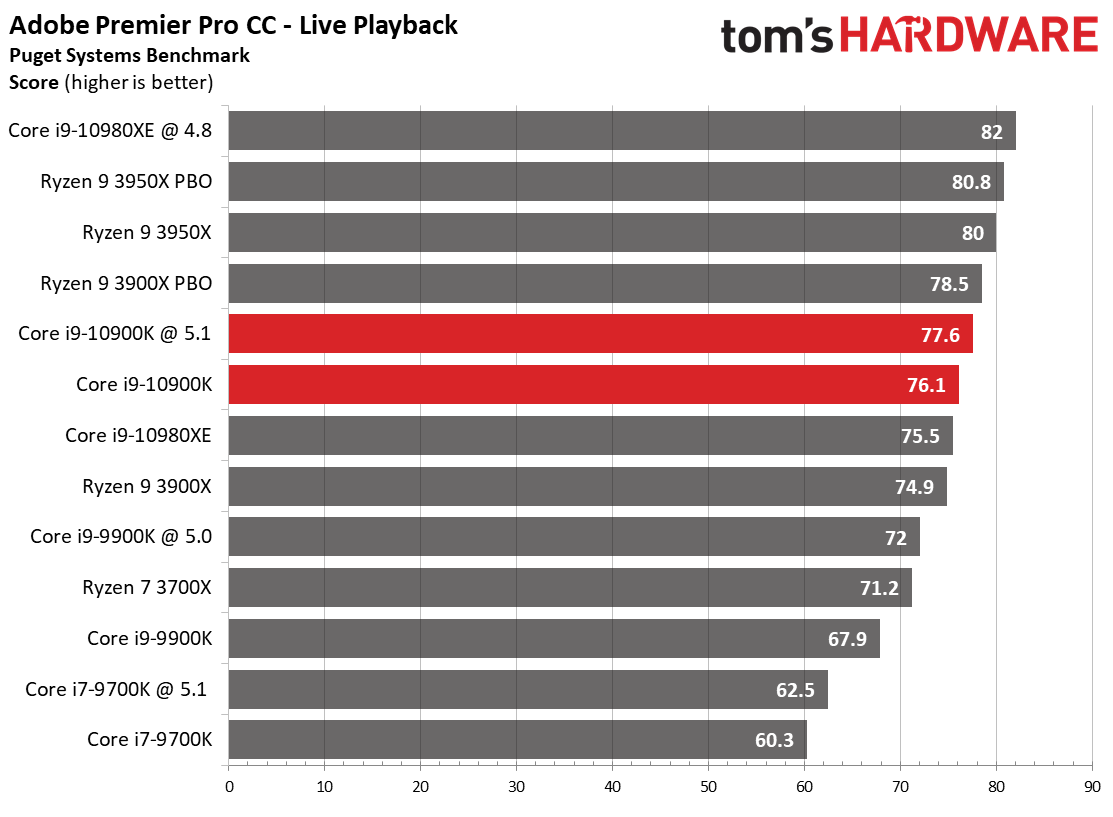
This benchmark measures live playback and export performance with several codecs at 4K and 8K resolutions. It also incorporates 'Heavy GPU' and 'Heavy CPU' effects that stress the system beyond a typical workload. Storage throughput also heavily impacts the score.
Get Tom's Hardware's best news and in-depth reviews, straight to your inbox.
The PCIe 4.0 interface benefits the Ryzen processors, but sheer brute computational force appears to be the name of the game here: The overclocked Core i9-10980XE takes a comfortable lead despite its PCIe 3.0 interface. The Ryzen 9 3950X is very impressive in this series of tests, especially given its palatable price point and mainstream platform. Meanwhile, the 10900K matches the Ryzen 9 3900X at stock settings, but trails after overclocking.
Adobe Photoshop CC Benchmark
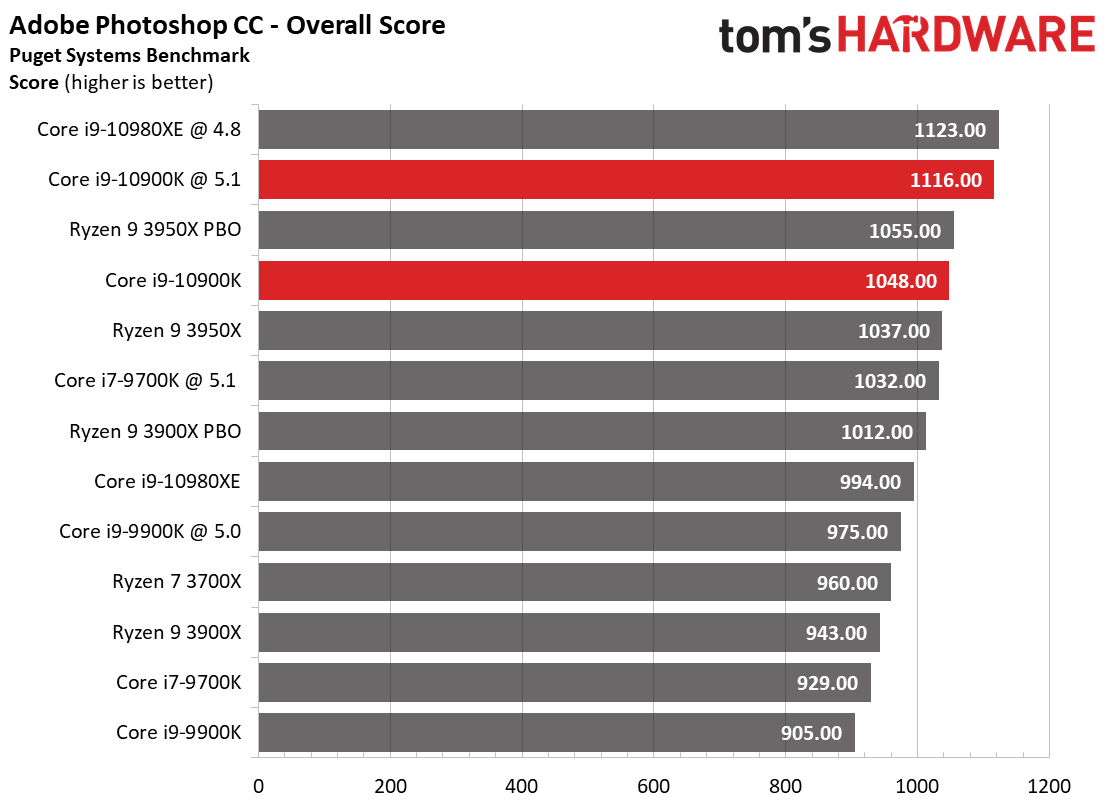
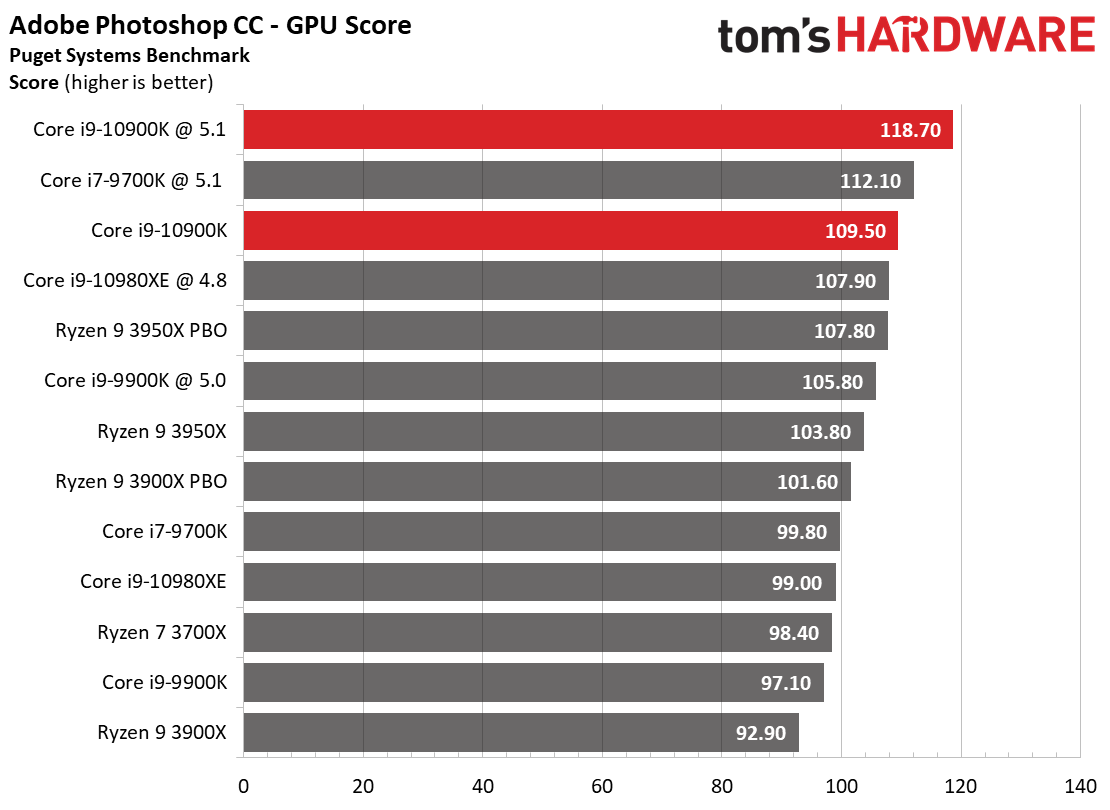
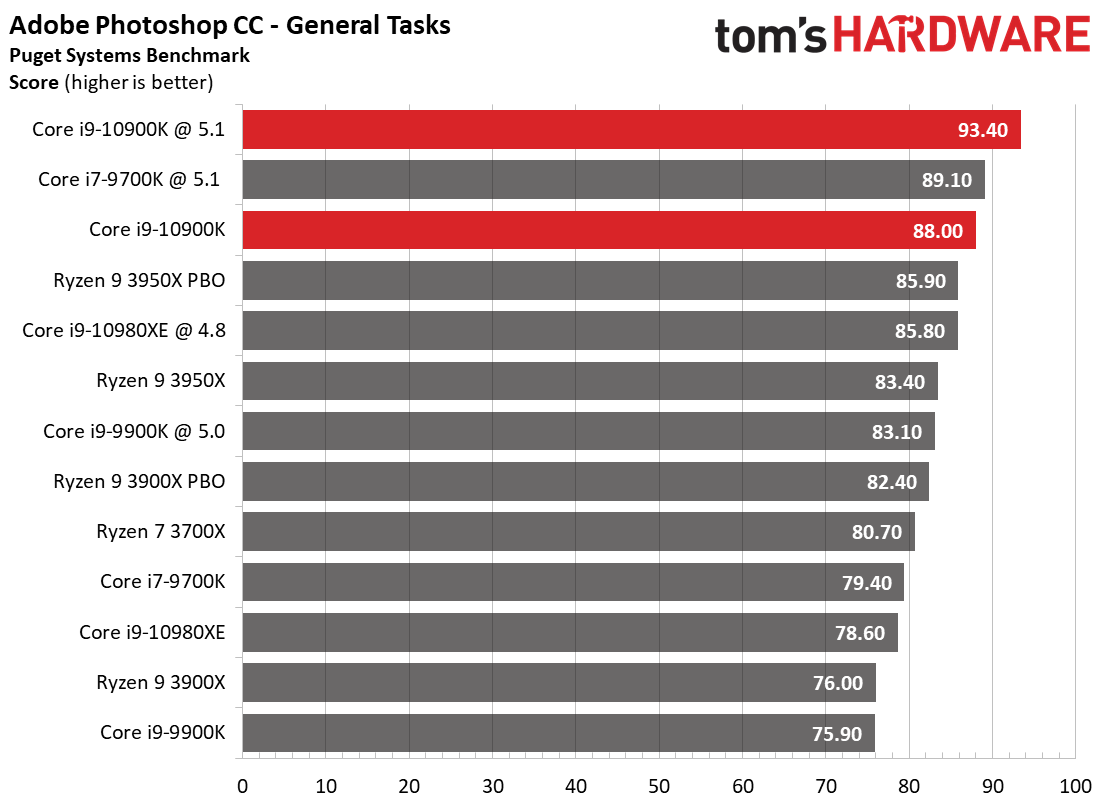

The Photoshop benchmark measures performance in a diverse range of tasks, measuring the amount of time taken to complete general tasks and apply filters.
The stock Core i9-10900K is incredibly strong in this benchmark as it matches the overclocked Ryzen 9 3950X and it nearly matches the Core i9-10980XE after we dialed in the 5.1 GHz all-core overclock. GPU acceleration is here to stay in professional applications, and the 10900K's high clock rates help push it to the lead in the GPU score, contributing to its overall lead.
SPECworkstation 3 Benchmarks
The SPECworkstation 3 benchmark suite is designed to measure workstation performance in professional applications. The full suite consists of more than 30 applications split among seven categories, but we've winnowed down the list to tests that largely focus specifically on CPU performance. We haven't submitted these benchmarks to the SPEC organization, so be aware these are not official benchmarks. We've upgraded to the new 3.0.4 revision that supports spanning the tests across processor groups and sockets.
Media and Entertainment


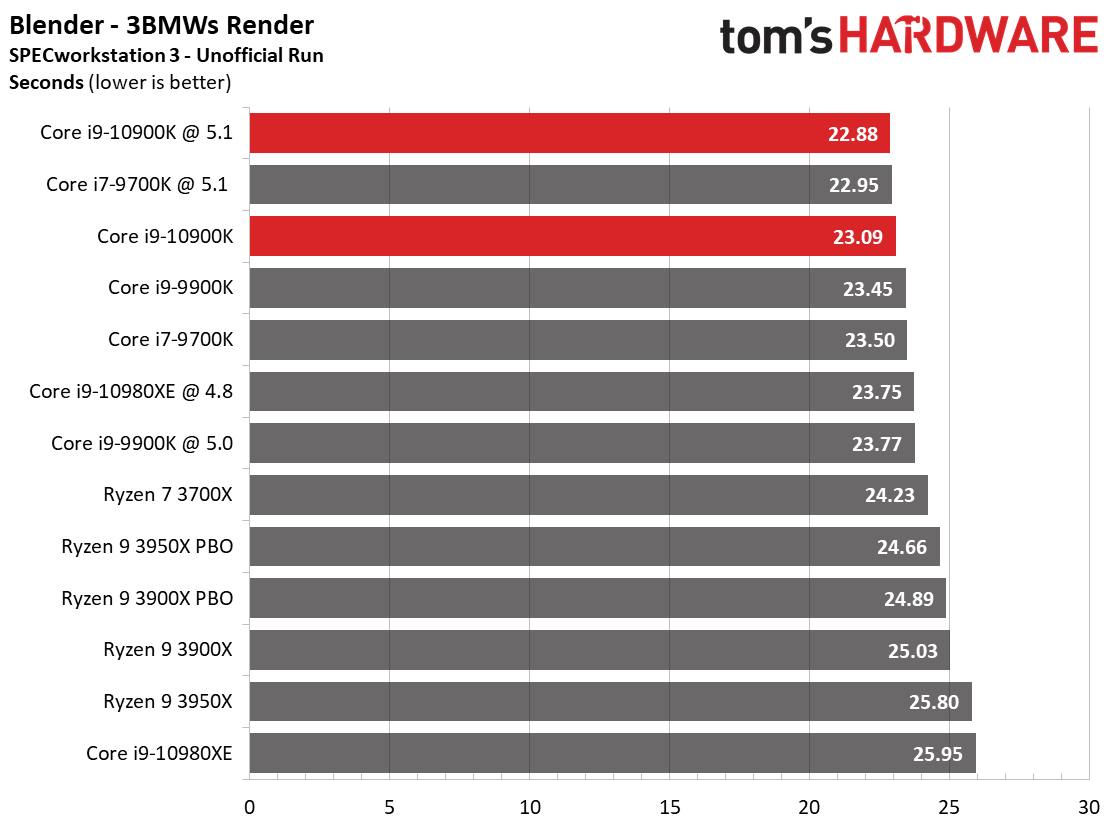

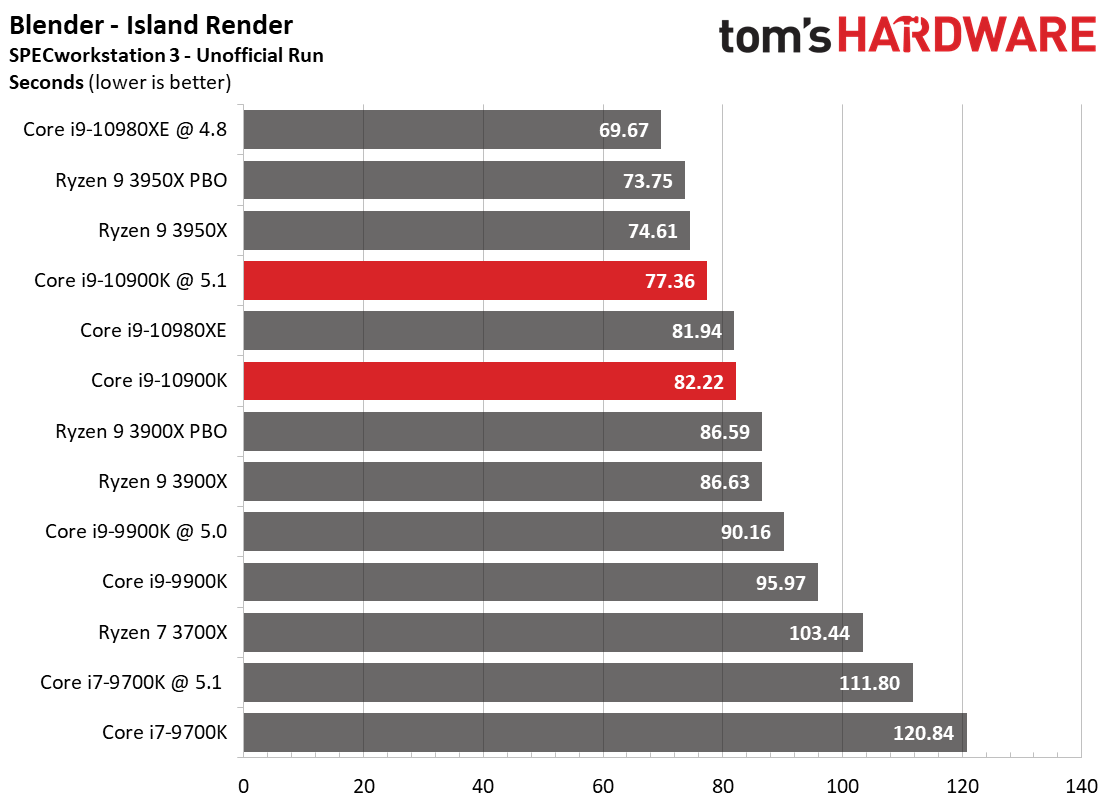
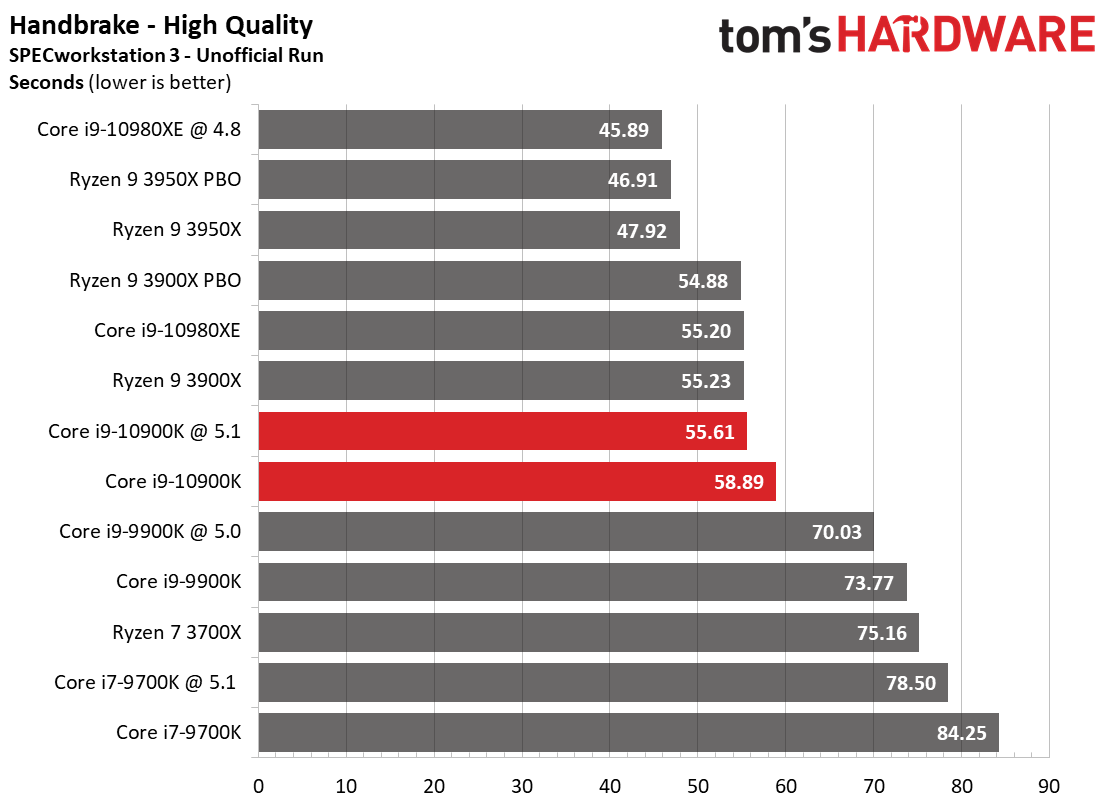
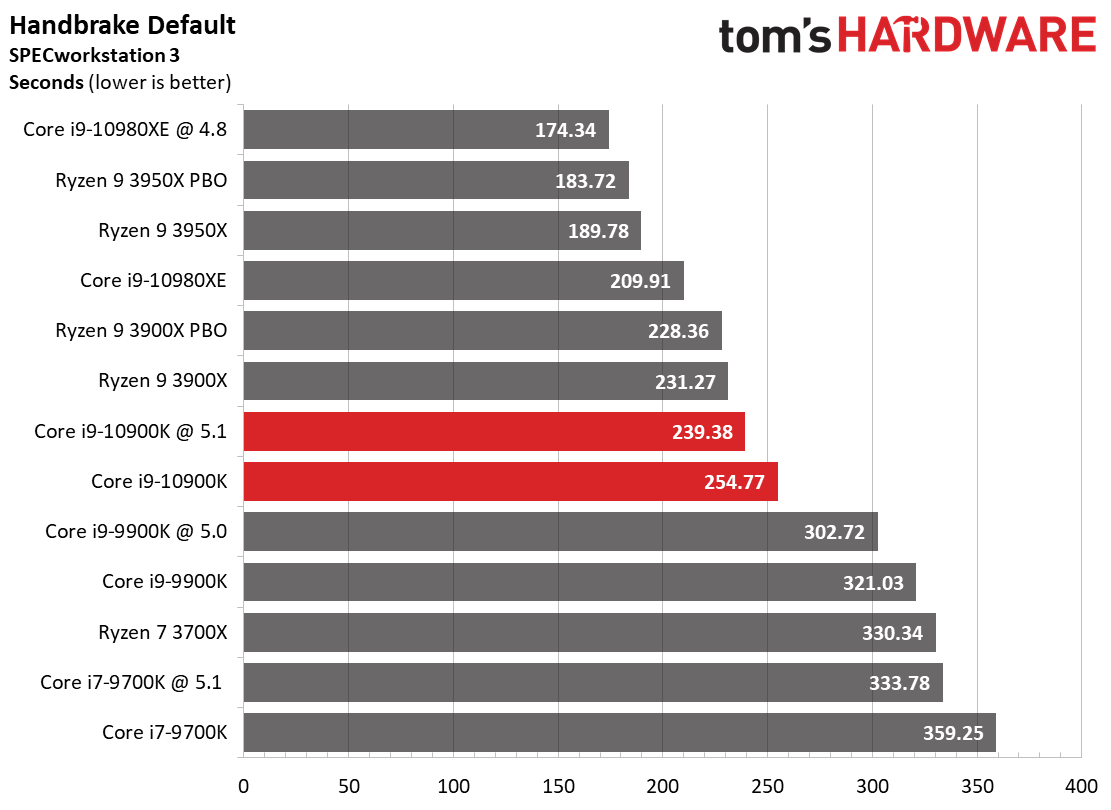
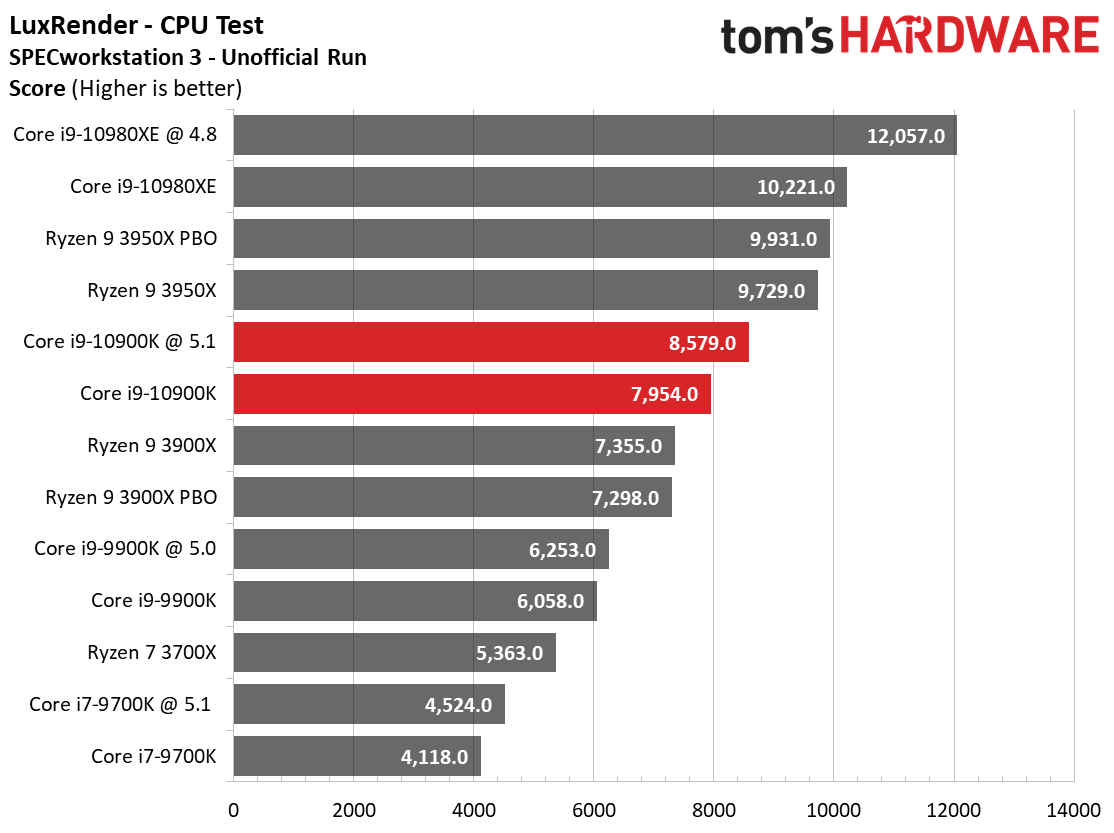
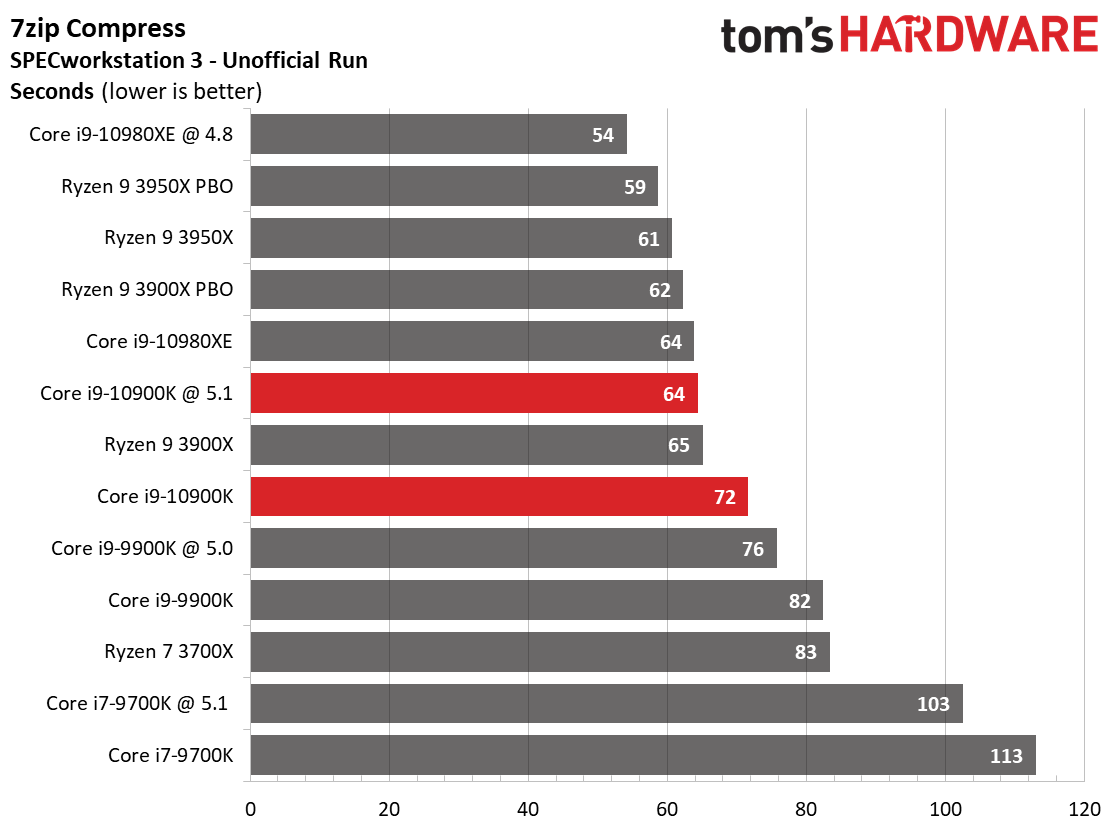
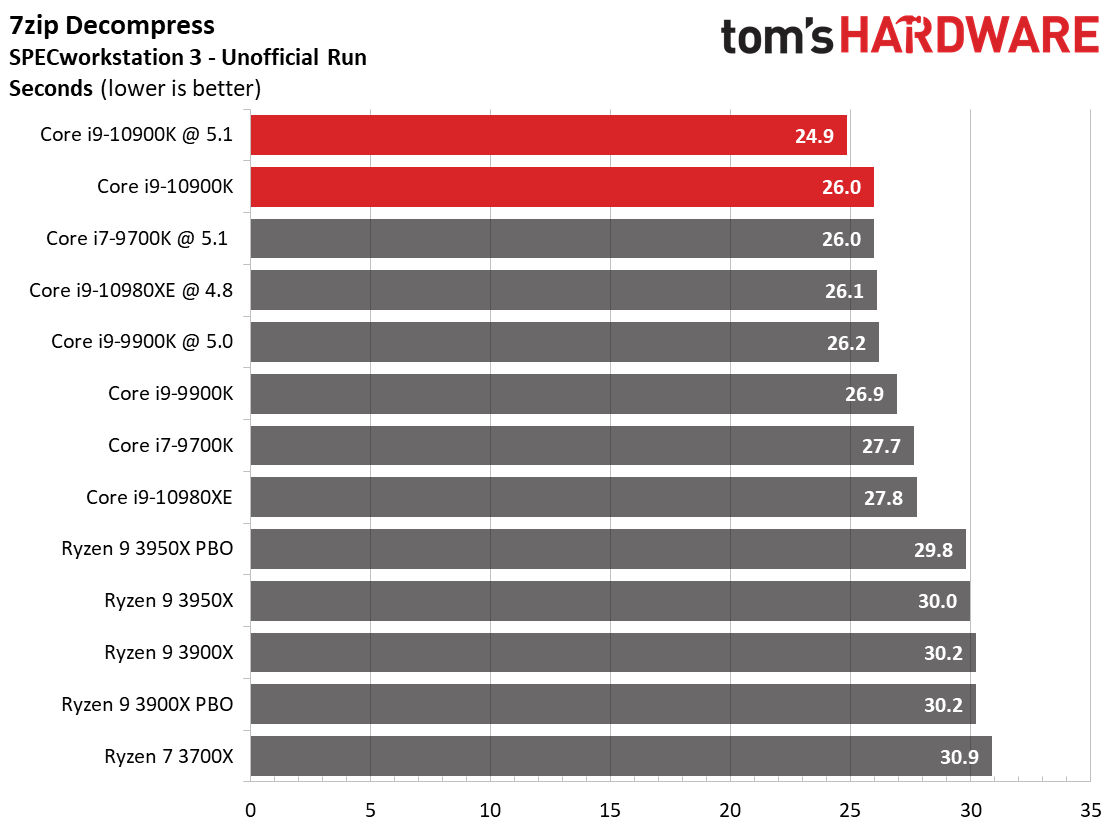
We run the new Blender Benchmark beta in our regular suite of tests on the following page, but different render jobs can stress processors in unique ways. Here we can see a breakout of several industry-standard benchmark renders that largely favor chips with hefty core counts. As such, it's no surprise to find the Ryzen 9 3900X, Ryzen 9 3950X, and Core i9-10980XE lead in three of the renders, but the Core i9-10900K scraped out leads over the 3900X in the Island and 3BMWs workloads.
The Ryzen 9 3900X also beats the 10900K in the HandBrake tests, but Intel's new chip turns the tables in the LuxRender benchmark.
NAMD and Rodinia LifeSciences
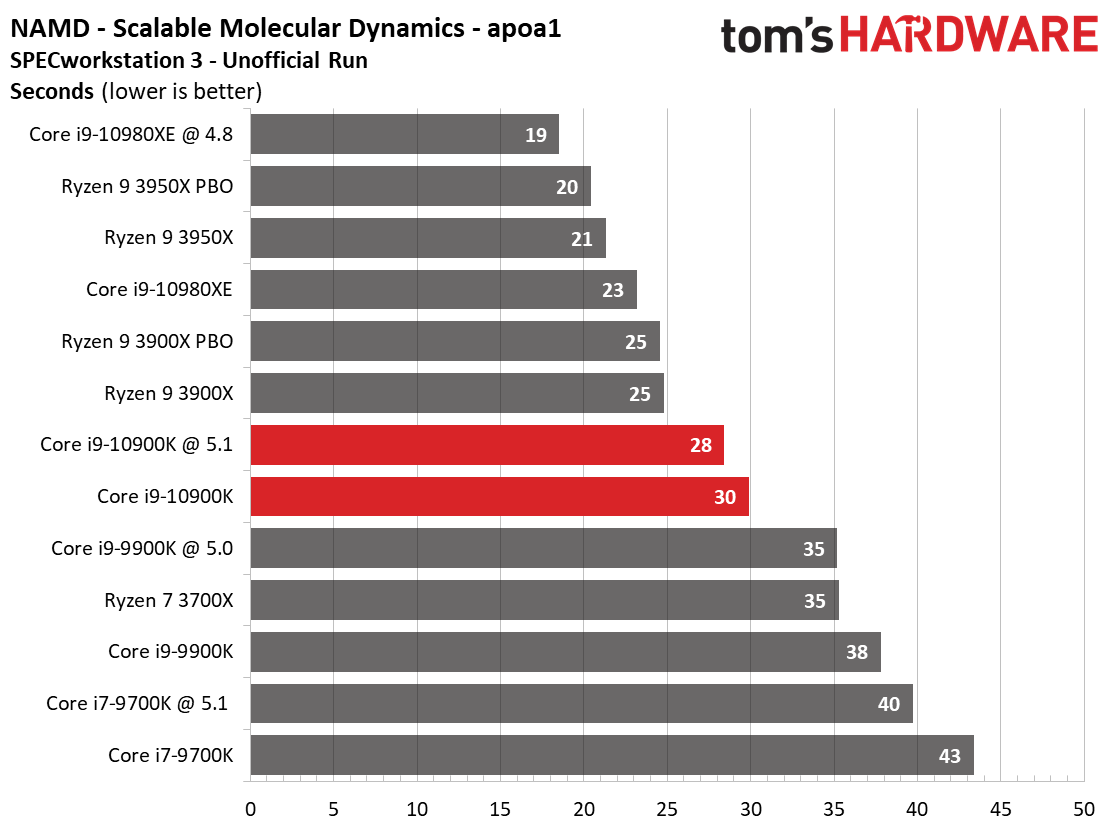
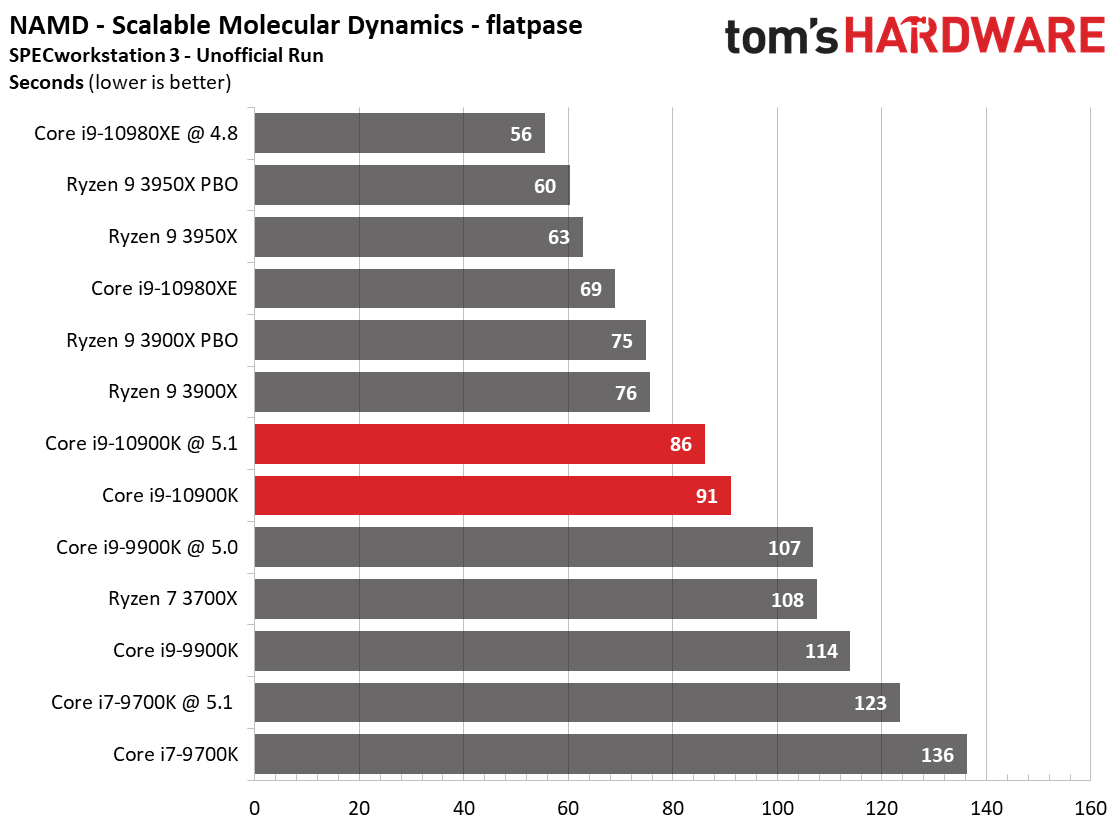

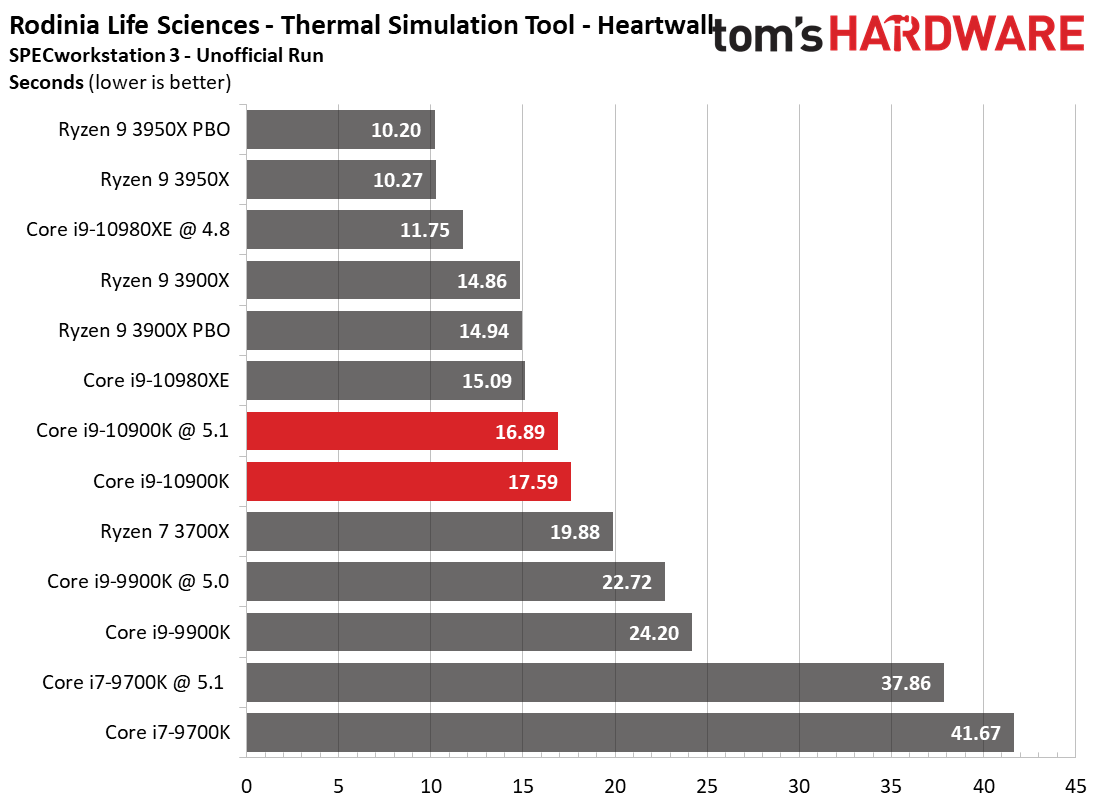
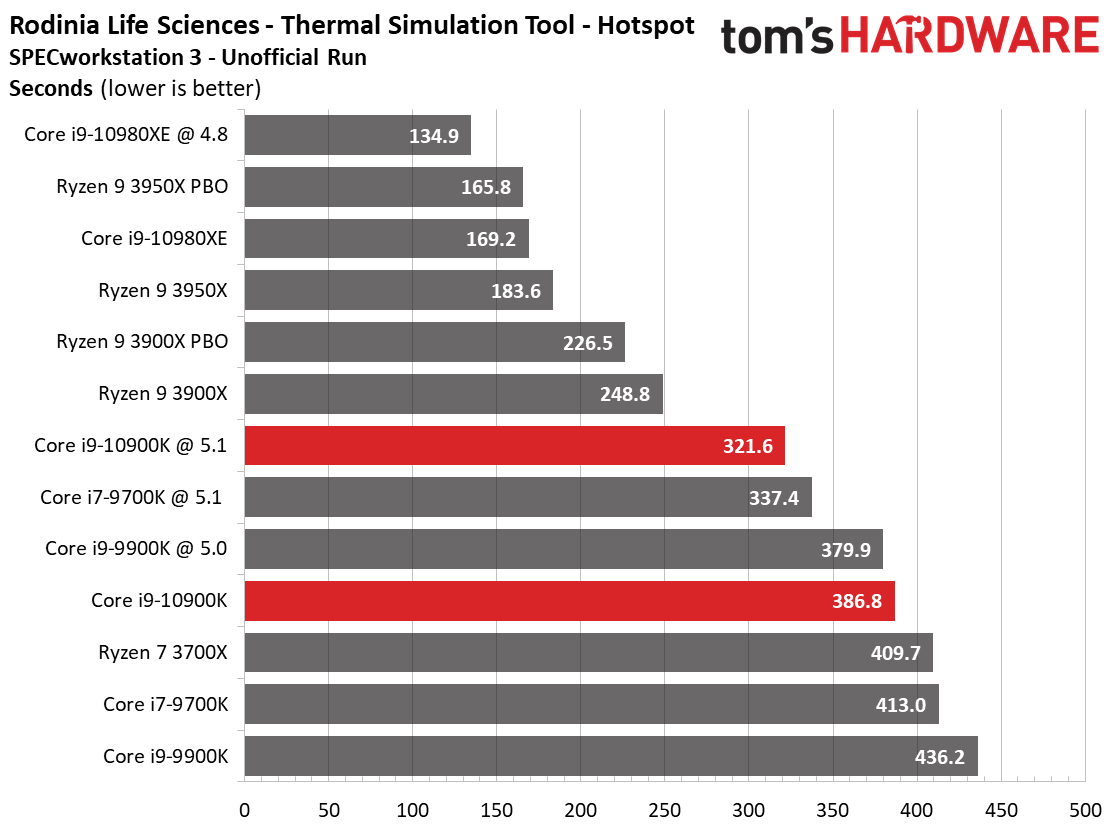
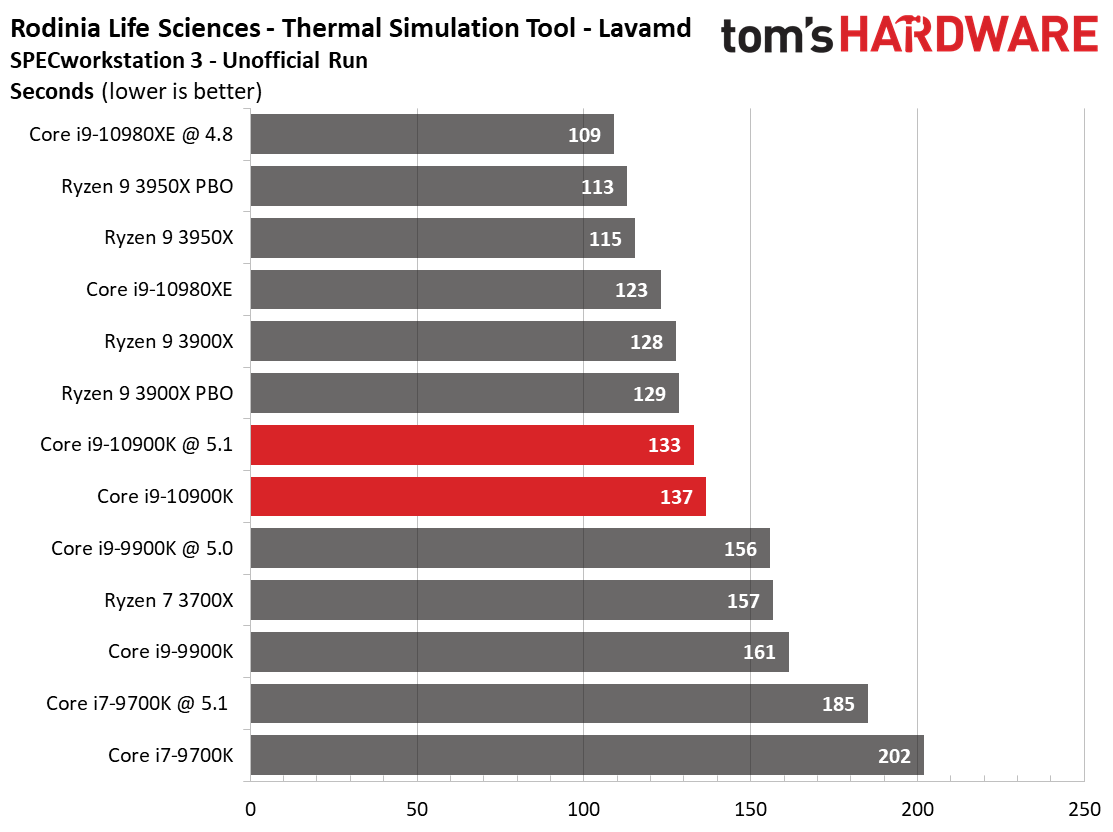

NAMD is a parallel molecular dynamics code designed to scale well with additional compute resources, and here we can see performance scale well largely based on core and thread counts. That benefits the Ryzen 9 3900X, which unsurprisingly sweeps this round of tests.
SPECworkstation 3's Rodinia LifeSciences benchmark steps through four tests that include medical imaging, particle movements in a 3D space, a thermal simulation, and image-enhancing programs. Again, the Ryzen 9 3900X's two extra cores and four extra threads help it sweep the 10900K.
Product Development and Energy, Financial Workloads
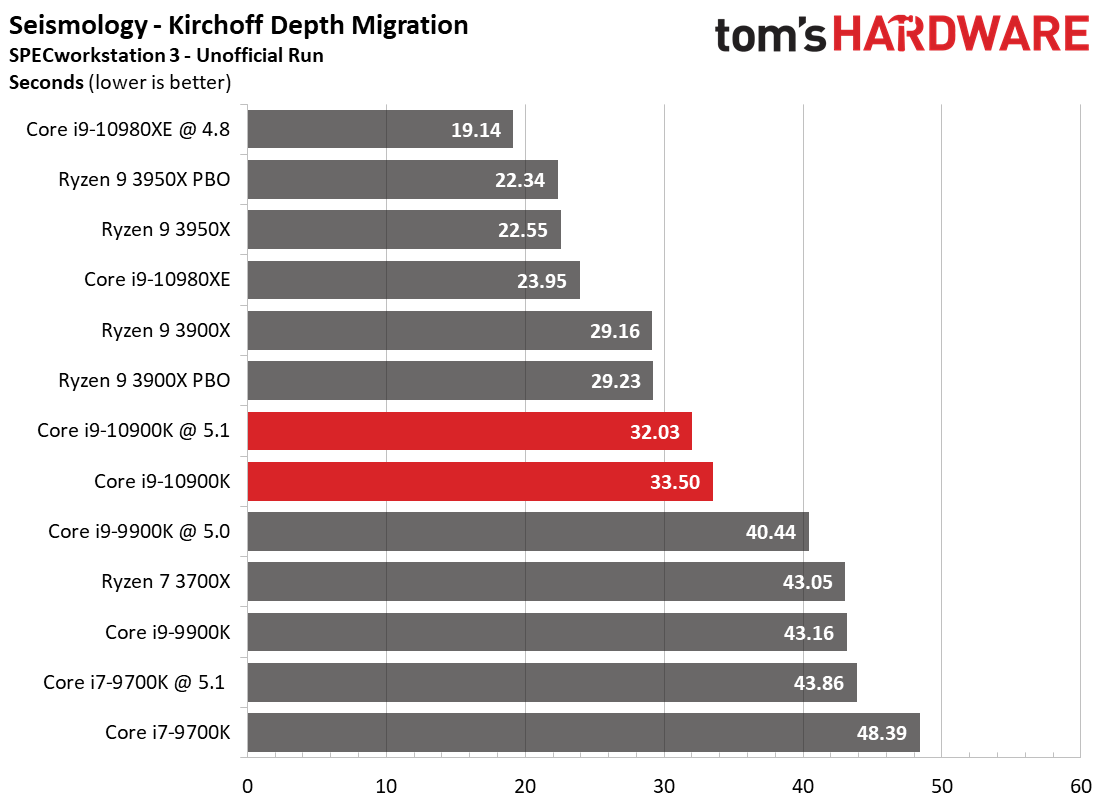
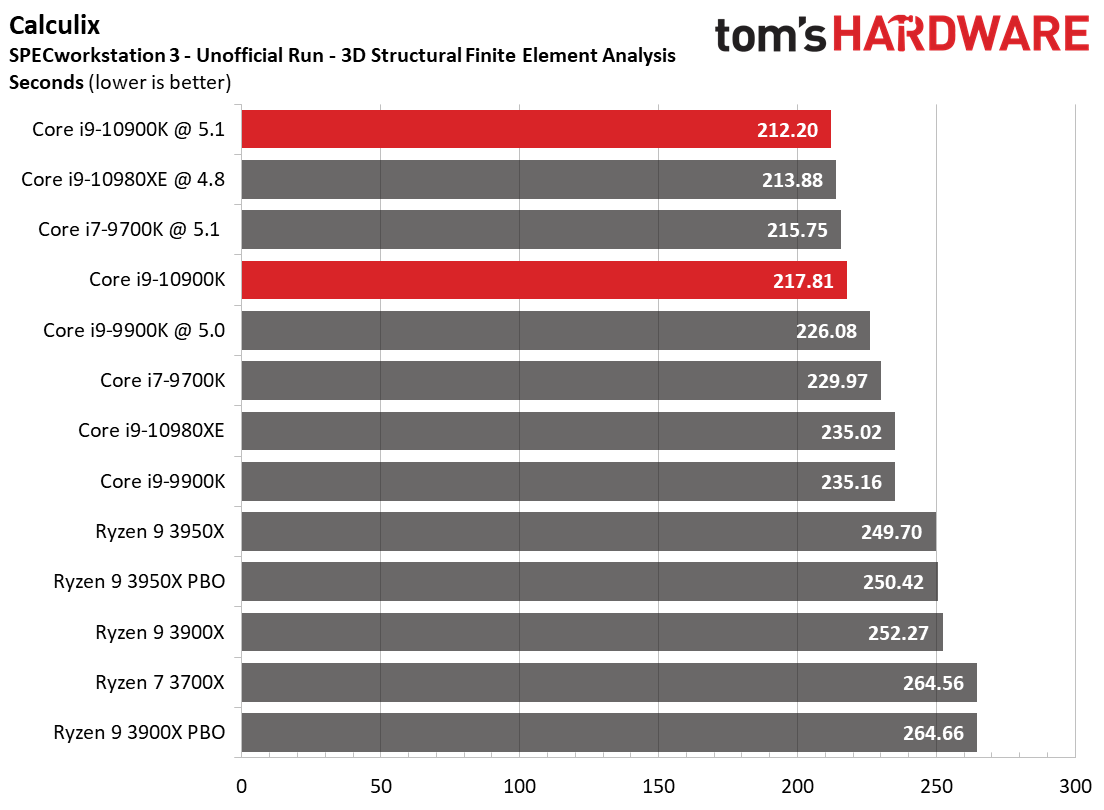
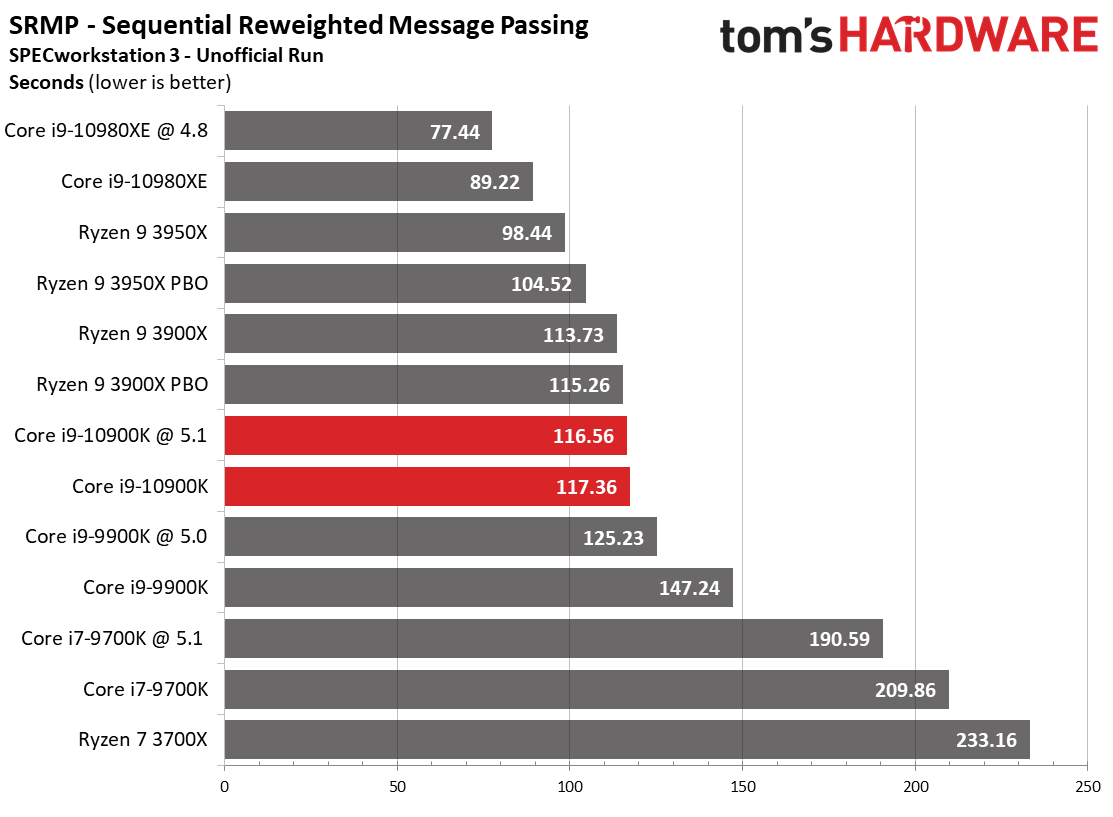

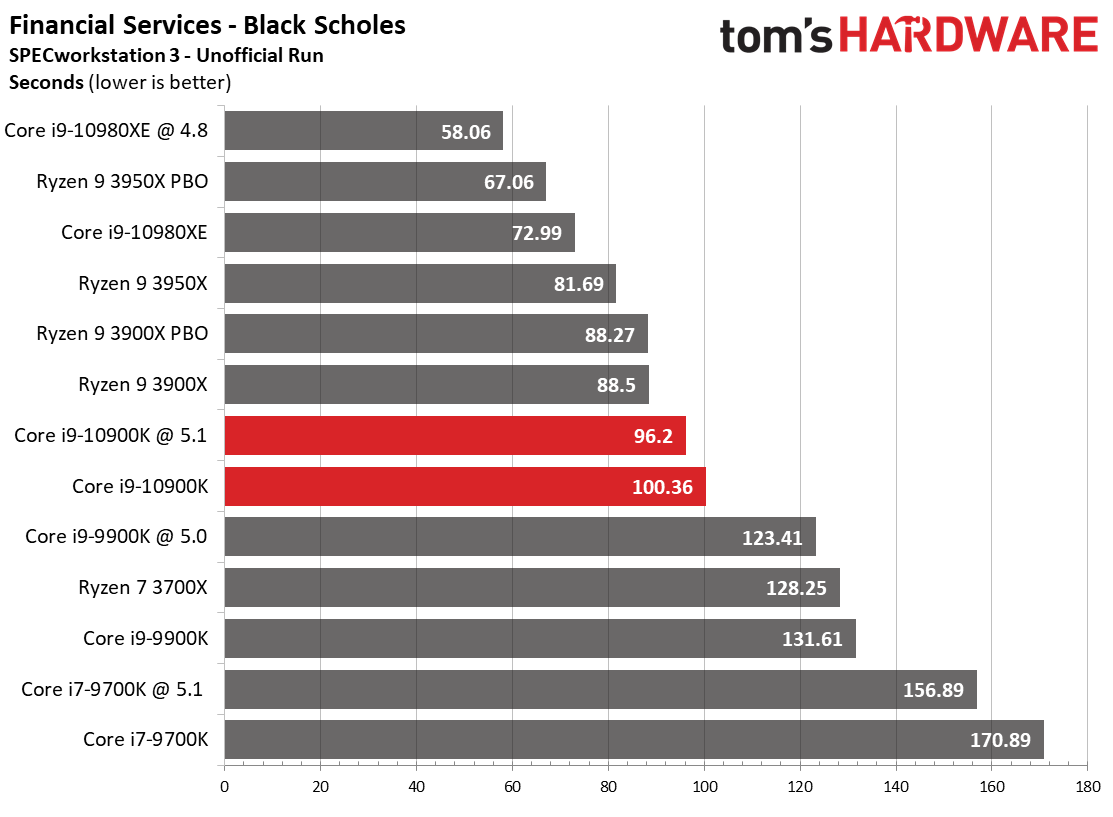

The earth’s subsurface structure can be determined via seismic processing. One of the four basic steps in this process is the Kirchhoff Migration, which is used to generate an image based on the available data using mathematical operations. Core counts reign supreme in this test, again granting the Ryzen 9 3900X a win over the 10900K.
Calculix is based on the finite element method for three-dimensional structural computations. This benchmark performs well on the Intel processors, with the -10980XE typically taking the overall lead in our tests. The strength of the 10900K's high clock rates comes into play here, lending it the pole position among the stock processors and the overall lead after tuning.
SRMP algorithms are used for discrete energy minimization. AMD processors have traditionally struggled with these tests, suggesting the benchmark might be latency-sensitive, but Ryzen 3000 reversed that trend in astonishing fashion. You'll notice the stock Ryzen 9 3950X is faster than its own overclocked configuration, but this is a repeatable phenomena. We also see the same trend with the Ryzen 9 3900X as it notches another win over the 10900K.
MORE: Best CPUs
MORE: Intel and AMD Processor Hierarchy
MORE: All CPUs Content
Current page: Core i9-10900K SPEC Workstation and Adobe Performance
Prev Page Intel Core i9-10900K Gaming Benchmarks Next Page Core i9-10900K Desktop PC Application Performance
Paul Alcorn is the Editor-in-Chief for Tom's Hardware US. He also writes news and reviews on CPUs, storage, and enterprise hardware.
-
st379 7 fps more on average than 9th gen.... very impressive:cautious:.Reply
At least we have rdna 2, ampere and ryzen 4000 later this year. There will be some very exciting products later this year. -
dave.jeffers Even if you want the 10900k, they are saying its a paper launch. Will be interesting to see how long it takes for NE and Amazon to get stock.Reply -
tummybunny This talks about fully-patched systems. Is this considered to be a fully patched system or can we expect a host of patches for SPECTRE etc. to slow everything down when they are eventually released.Reply
I expected more discussion of what Intel might have done to reduce the endless list of security threats that have been uncovered in the last few years. -
King_V ReplyMandark said:Wait for it. The intel shills are coming to this thread soon to wail us their one lone song
Well, I mean, it does, after all, offer the biggest lead in terms of frames/second than the top AMD processor. With a 2080Ti. Um... at 1080p. At frame rates where the human eye is incapable of perceiving the difference.
But, think of it this way, at lower resolutions (1600x900, 1280x720), the frame rate lead would be EVEN MOAR!! -
Isokolon so they're releasing a CPU that for a home user is basically useless and is still worse as a workstation than a 3900X?Reply
Intel really needs to up their game. -
jeremyj_83 "The heavily-threaded y-cruncher benchmark, which computes pi using the taxing AVX instruction set, reveals what we consider to be erroneous test results based upon our previous experience with Intel chips based on the never-ending Skylake architecture."Reply
In Anandtech's review we see the same behavior for the 10900k. https://www.anandtech.com/show/15785/the-intel-comet-lake-review-skylake-we-go-again/6 Ian's said "y-Cruncher is another one where the Core i9 performs worse than the Core i7 in the multithreaded test, despite being better on the single threaded test. We again put this down to memory bandwidth. We need to update this test to the latest version of y-Cruncher, which has additional optimizations for Zen 2 processors, but also to increase the digit count in our MT test. " -
dimar 9900K will serve me well for few more years. Will be looking for upgrades once DDR5 and PCIe 5.0 hit the market.Reply
Hoping for some crazy stuff from AMD and Intel. -
InvalidError Not exactly surprised that the 10900k isn't a value king. I am far more interested in the updated bang-per-buck on the 10600k and 10700k.Reply